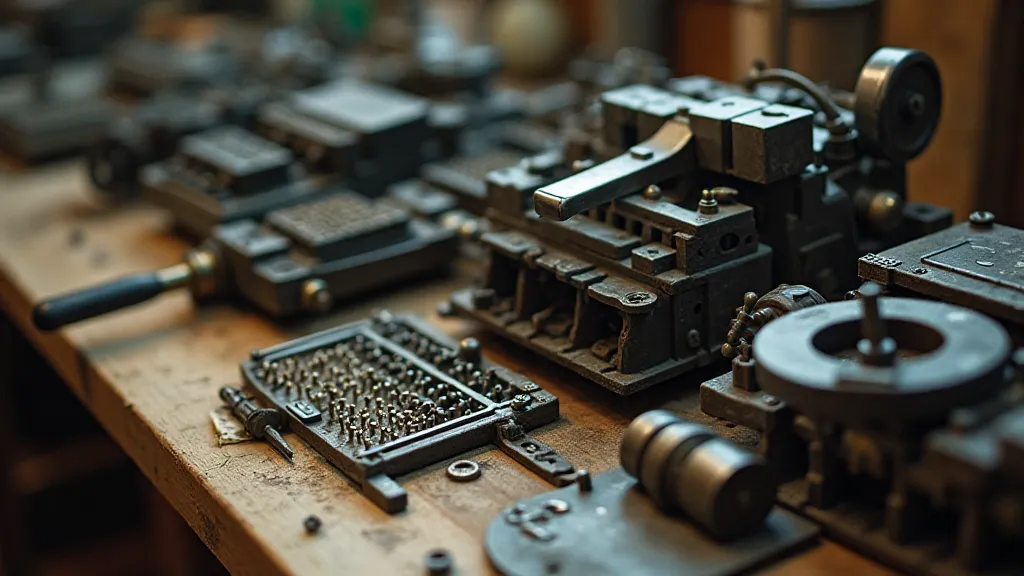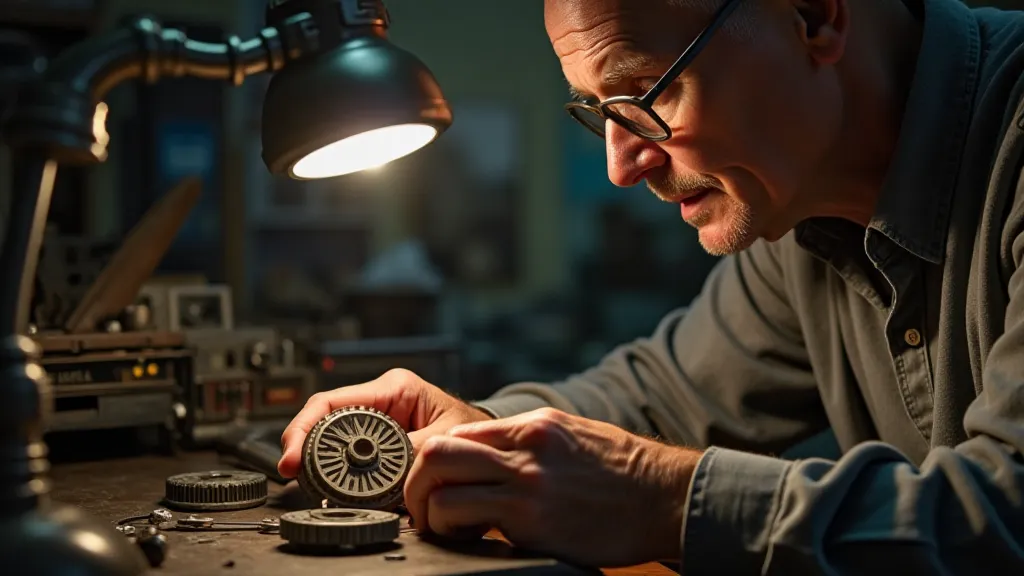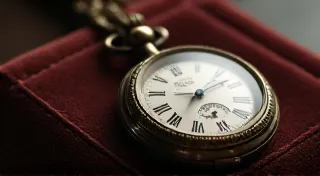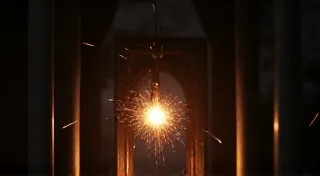The Keysmith's Reverie: Mastering the Art of Typewriter Part Sourcing
There’s a particular scent that clings to antique typewriters. It’s a blend of aged metal, dried oil, and the faint ghost of countless stories hammered onto paper. It’s a smell that transports you, not just to a specific era, but to the focused intensity of a writer wrestling with words, a secretary crafting vital correspondence, or a student furiously taking notes. Restoring these machines is more than mechanical work; it’s an act of preservation, of reconnecting with a tangible past where the click and clack of keys held a different kind of weight. And at the heart of that restoration lies a crucial, and often deeply challenging, element: finding replacement parts.
For the uninitiated, the idea of typewriter repair might seem straightforward. After all, aren't they just intricate clockwork mechanisms? In a way, they are. But the sheer variety of models – Remington Noiseless, Underwood Standard, Smith Corona Silent – each with their unique construction and often idiosyncratic quirks, creates a landscape of scarcity. A seemingly small part, a single escapement lever, can be the difference between a beautiful, functional machine and a beautiful, static display piece.

The Scarcity Factor: Why Replacement Parts are a Treasure
The peak years of typewriter production, roughly the 1920s through the 1960s, are now decades in the rearview mirror. Mass production gave way to digital word processors, and vast warehouses of spare parts were liquidated, scattered, or simply discarded. The relative affordability of typewriters further contributed to their abandonment. Today, what were once considered commonplace items have become highly sought-after by collectors and restorers. This isn’t just about finding a lever or a screw; it’s about uncovering a small piece of history. Understanding the impact of ribbon degradation, and how to preserve those fragile remnants of the past, is another crucial element of the typewriter enthusiast's journey. You can explore that topic further in "The Cartridge's Lament: Understanding Ribbon Degradation and Preservation."
I remember my first restoration project, a 1938 Smith Corona Silent. I was brimming with confidence, having watched countless YouTube videos and read several online guides. I thought, "How hard can it be?" Well, the escapement rod snapped. A tiny, seemingly insignificant piece, essential for the typewriter's rhythmic process. My initial optimism crumbled into a disheartening search that lasted weeks. Online forums yielded only dead ends. eBay listings vanished as quickly as they appeared. It was a humbling lesson in the patience required for this craft. That initial frustration ultimately fueled a deeper commitment to learning the nuances of sourcing, a skill that transcends mere mechanical knowledge. Sometimes the challenge isn't just the physical part itself, but also the sounds it makes. The unique rhythm of a properly functioning typewriter—the satisfying clatter and ding—can significantly impact the creative process. You might be intrigued to learn more about how typewriter sound influences prose.
Navigating the Online Landscape: Where to Begin
The internet, despite the challenges, remains the primary battleground for the keysmith’s quest. Here’s a breakdown of key online resources, with a healthy dose of realistic expectations.
- eBay: The obvious starting point, but requires diligence. Refine your searches with specific model numbers and parts descriptions. Save searches and set up email alerts. Be wary of vague listings and always ask questions about condition.
- Online Typewriter Forums: These are invaluable repositories of knowledge and often contain buy/sell/trade sections. Typewriter Collector’s Digest Forums, Typewriter Heaven, and others offer communities where experienced restorers share tips and resources. Don’t be afraid to ask questions – most members are generous with their expertise.
- Specialized Typewriter Parts Dealers: Several dealers specialize in rare and hard-to-find typewriter parts. These can be pricier than eBay, but often offer better quality and more accurate descriptions. Research dealers carefully; reputation is key.
- Vintage Mechanical Supply: A website and physical shop specializing in typewriter and adding machine parts.
- Facebook Marketplace: While often overlooked, Facebook Marketplace can occasionally yield unexpected treasures.
It’s crucial to remember that online listings are often fleeting. What’s available today might be gone tomorrow. Persistence and speed are essential. Building relationships with dealers and forum members can also provide invaluable access to coveted parts. Sometimes, finding the right part isn't just about the physical object; it’s about feeling the echoes of the past, the residual creativity embedded within the machine. The imagination of former writers, still somehow present, adds another layer of appreciation for these devices—a phenomenon explored in "The Ghost in the Gears: Exploring the Residual Creativity of Past Writers." A common frustration for restorers is when a typewriter becomes stuck or experiences jamming. These issues can be surprisingly complex, and a deep understanding of the machine’s inner workings is essential for resolving them. You may find valuable troubleshooting tips in "The Frozen Dialogue: Troubleshooting Common Typewriter Jam and Sticking Issues."
Beyond the Digital Realm: Cultivating Connections
While the internet provides a vast searchable database, there’s a certain romanticism to the traditional methods of sourcing. Attending flea markets, antique shows, and swap meets can unearth forgotten stashes of typewriter parts. More importantly, these events provide opportunities to connect with other collectors and restorers. The typewriter community is surprisingly tight-knit, and a personal connection can often lead to the discovery of a hard-to-find part.

I once stumbled upon a remarkable collection of Underwood parts at a small-town flea market, thanks to a conversation with an elderly gentleman who had been collecting typewriters for over fifty years. He wasn’t actively selling, but he was willing to share his knowledge and, eventually, parted with a crucial platen roller I had been searching for months.
The Art of Adaptation and Improvisation
Sometimes, despite the best efforts, a specific part simply isn’t available. This is where the true artistry of typewriter restoration comes into play. Adaptation and improvisation become necessary skills. This might involve fabricating a part from scratch, modifying an existing part from a similar model, or even finding a creative workaround that preserves the typewriter’s functionality.
It’s important to note that modifications should be approached with caution. Preserving the typewriter’s originality is a core tenet of restoration, and irreversible alterations should be avoided whenever possible. However, a functional typewriter is more valuable than a pristine, non-working museum piece. A little ingenuity can go a long way. The meticulous process of deciphering the various markings and terminology found on these machines can provide valuable clues during restoration—a detailed look at the language of these devices is offered in "The Taxonomy of Keys: Deciphering the Language of Typewriter Markings." The stories that these machines have witnessed can be truly remarkable. Collectors often uncover fascinating manuscripts and documents tucked away within the workings of abandoned typewriters. You might enjoy reading about "The Manuscript's Ghost: Uncovering Stories from Abandoned Typewriter Collections."
The Alchemy of Restoration: Transforming Rust into Prose
The journey of bringing a neglected typewriter back to life isn't merely a mechanical process; it's an act of transformation, akin to alchemy. Removing years of accumulated grime, liberating stiff mechanisms, and witnessing the first clean strokes across the platen – it's a deeply rewarding experience. The challenges, however, are significant. Rust, corrosion, and dried oil present formidable obstacles. Careful cleaning, lubrication, and often, delicate repairs are required to revive these machines. Understanding the intricate interplay of each component and embracing a patient, methodical approach are essential for success. Beyond the technical aspects, there's a profound sense of connection to the past, to the countless stories that the typewriter has witnessed and preserved. This transformation, this alchemy of restoration, is what truly captivates the keysmith.
It's a craft that demands patience, perseverance, and a genuine appreciation for the ingenuity of a bygone era. The keysmith’s reverie isn't just about finding parts; it’s about honoring the legacy of those who wrote, typed, and communicated on these remarkable machines. It’s about ensuring that the stories they hold continue to be told.






